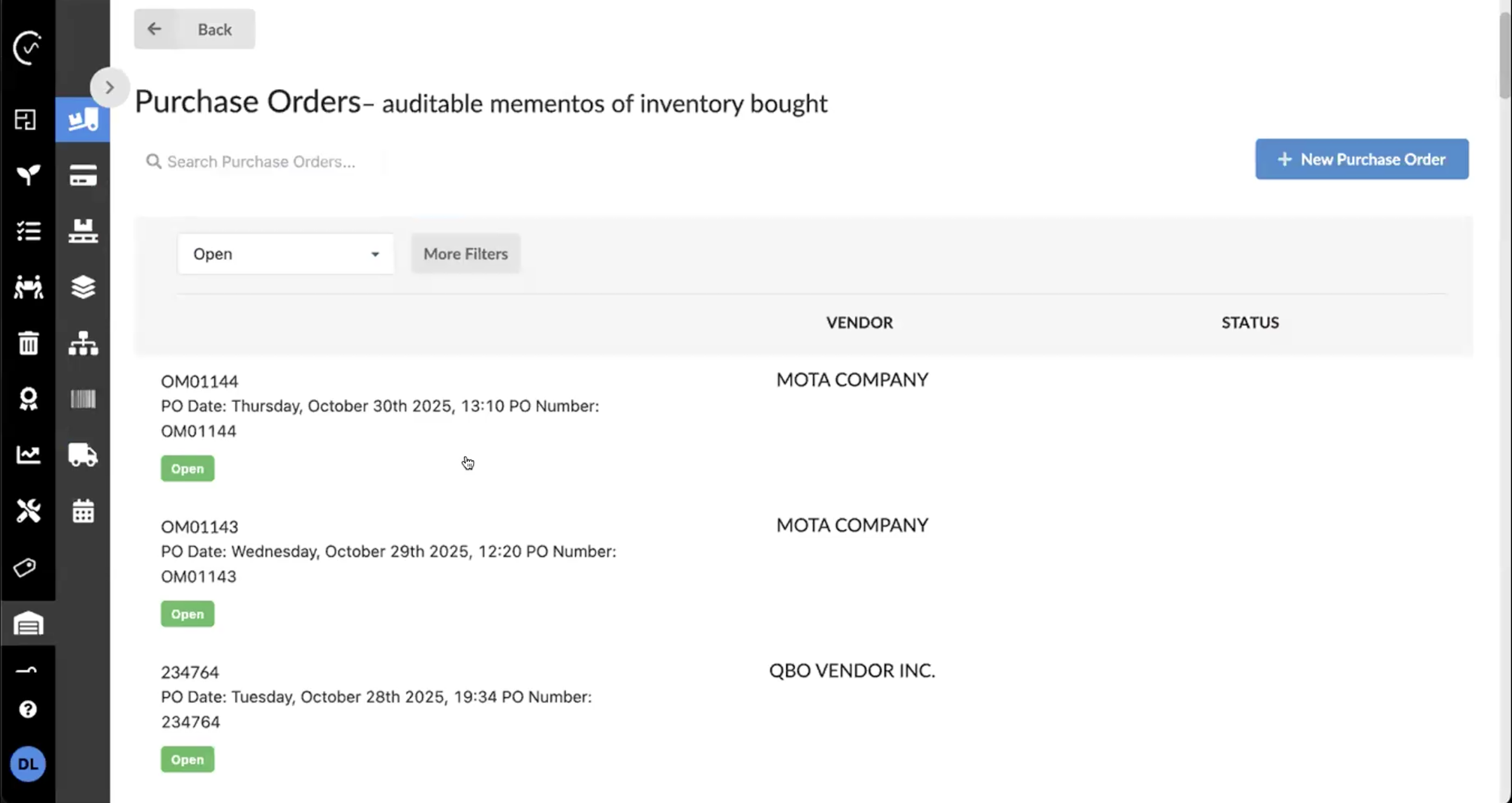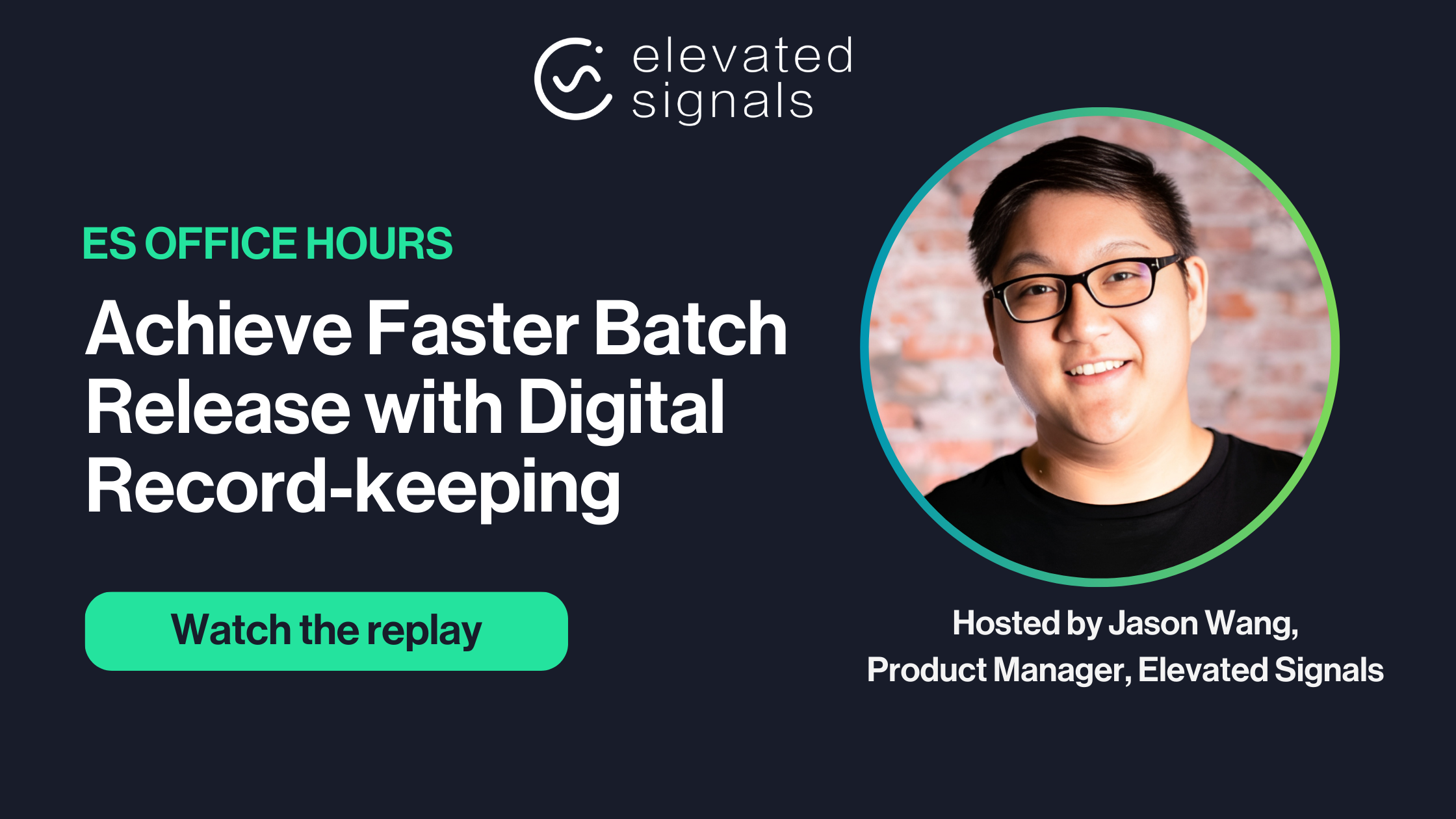Why It Matters
Disconnected systems slow manufacturers down. When production, purchasing, and finance each live in their own world, teams spend valuable time chasing data, re-entering information, and untangling mismatched records at month-end.
The Elevated Signals × Omnae integration fixes that. It connects every operational and financial action into a single, traceable flow—so operators, finance, and QA share one version of the truth.
As our Co-founder and COO, Hardeep Shoker, puts it:
This is about bringing finance and operations into sync. The more we simplify and connect, the faster companies can grow.
Read below or watch the launch video:
The Problems We’re Solving—and How the Integration Fixes Them
1. Triple Entry and Manual Reconciliation
The problem: Teams re-entering the same purchase and invoice data into three systems—QuickBooks, Elevated Signals, and spreadsheets—causing delays and transcription errors.
The fix: Omnae becomes the bridge. Each transaction is created once, then synced automatically with Elevated Signals and QuickBooks. Finance closes on time because the numbers are always right.
2. Scattered Documents and Lost Context
The problem: Packing slips, QA forms, and chain-of-custody docs were scattered across Google Drive and inboxes.
The fix: The integration attaches every file—POs, shipping records, inspection results—to its transaction. Updates ripple across all systems instantly, giving teams complete traceability and a single audit trail.
3. Unreliable Cost and Pricing Data
The problem: Discounts, excise rates, and supplier-specific costs constantly changed, making it impossible to maintain real-time COGS accuracy.
The fix: Omnae acts as the system of record for pricing and transaction state. Quotes, volume discounts, and cost changes feed automatically into QuickBooks and Elevated Signals, keeping financial data in sync with what’s actually happening on the floor.
4. Communication Gaps Between Ops and Finance
The problem: Purchase Orders and Sales Orders were exchanged over email with no visibility or version control.
The fix: Omnae’s email-to-order AI reads incoming PO emails, matches them to quotes, and drafts Sales Orders for approval—so work only happens once. Changes or corrections sync automatically across both systems.
5. Inventory Blind Spots
The problem: Operations marked shipments complete before finance saw receipts, and QA delays left inventory data out of sync.
The fix: Every movement is now connected. When goods are received and approved, Omnae updates Elevated Signals and QuickBooks instantly. Finance and operations always see the same on-hand numbers.
6. Month-End Guesswork
The problem: Returns, partial shipments, and missing items created hours of manual reconciliation.
The fix: The integration handles real-world complexity—NCRs, credits, short shipments, and partial deliveries adjust automatically across systems, complete with timestamps and reasons logged for audit readiness.
7. Disconnected Teams
The problem: Finance, operations, and QA each ran their own tools, creating friction.
The fix: This integration unites them. Shared data removes friction, speeds up decisions, and keeps everyone aligned on what’s really happening day to day.
Integration Walkthrough: How It Works in Action
If you’ve ever juggled multiple spreadsheets or emailed to confirm POs, you’ll appreciate how simple this flow becomes. Here’s what it looks like inside Elevated Signals with Omnae connected.
1. Connect Your Systems
When you first enable the integration, Omnae syncs your partners, products, and price lists from Elevated Signals and QuickBooks.
Every order starts from the same clean dataset—no imports, no mismatched SKUs.
2. Create or Receive a Purchase Order
You can create a PO in Omnae or simply forward a customer’s emailed PO.

Omnae reads the document, matches it to a quote, and drafts a Sales Order. Once approved, it appears instantly in Elevated Signals and QuickBooks.
3. Ship, Receive, and Track in Real Time
As materials move, Omnae keeps systems aligned. When a shipment is confirmed, Elevated Signals marks the inventory as expected. When QA approves, it becomes live stock.


Partial deliveries, returns, or NCRs all sync automatically.
4. Manage Invoices and Payments
When an order is fulfilled, Omnae generates the invoice or bill automatically.

Finance no longer chases paperwork, every transaction posts to the right account, with audit logs intact.
5. See the Full Picture at a Glance
Your operational, financial, and quality data stay in sync.
Every change, price updates, quantity changes, approvals, is tracked in one audit trail.
What You’ll See in the Demo
Check out the demo for a more detailed walkthrough:
- RFQ → PO → Invoice automation
- Real-time inventory visibility across purchase and sales orders
- Full audit trails and version history
- Automatic posting to QuickBooks
- QA, NCR, and change-order handling with instant updates
The Bigger Picture
The Elevated Signals × Omnae integration bridges the final gap between operational reality and financial reporting.
It removes rework, tightens control, and creates a continuous thread of information, from the moment an order is placed to the day it’s invoiced and reconciled.
For manufacturers, that means:
- Fewer handoffs and errors
- On-time, confident month-ends
- Finance and operations moving together—not in parallel
See It in Action
Want to see how this integration would work in your facility?
Book a short walkthrough with the Omnae team to see your own workflows inside the ES × Omnae flow.
Clarity in motion starts with one shared truth. Let’s put it to work for your team. ✌️
.png)



%20(1).png)
.png)
%202.png)

.png)


